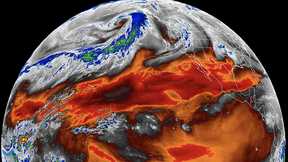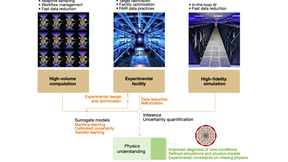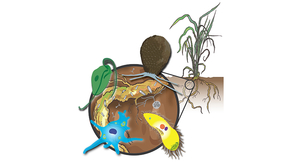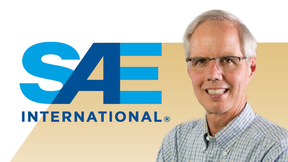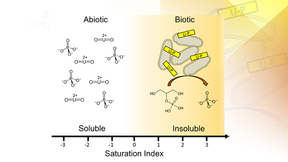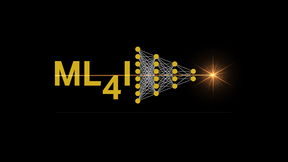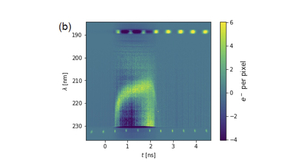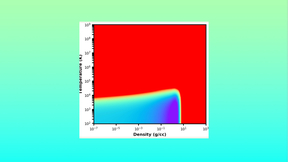Back
Physical and Life Sciences
Satellites may have underestimated warming in the lower atmosphere
New research by Lawrence Livermore National Laboratory (LLNL) climate scientists and collaborators shows that satellite measurements of the temperature of the troposphere (the lowest region of the atmosphere) may have underestimated global warming over the last 40 years. The research appears in the Journal of Climate. The team studied four different properties of tropical…
The data-driven future of extreme physics
By applying modern machine learning and data science methods to “extreme” plasma physics, researchers can gain insight into our universe and find clues about creating a limitless amount of energy. In a recent perspective published in Nature, Lawrence Livermore National Laboratory (LLNL) scientists and international collaborators outline key challenges and future directions…
Underneath it all: dishing the dirt on protists
Plants evolved in a world dominated by prokaryotic and eukaryotic microbes. Underneath the surface, plant roots interact with microbes in the soil, also called the rhizosphere microbiome. Although bacteria and fungi are well-studied in the rhizosphere (the layer closest to the roots), other components, including viruses and protists, are less well known. A protist is any…
Scientists identify key trends in high-energy-density mixing layers
Imagine a bottle of salad dressing containing oil and vinegar. The oil has a lower density than vinegar, so it floats on the vinegar. The oil will not stay trapped under the vinegar if the bottle is flipped upside down. It will bubble up through the vinegar until a stable state is restored. This simple physical process is known as Rayleigh–Taylor instability, and it can be…
Observations show marine clouds amplify warming
A new analysis of satellite cloud observations finds that global warming causes low-level clouds over the oceans to decrease, leading to further warming. The work, led by researchers at Lawrence Livermore National Laboratory (LLNL), in collaboration with colleagues from Scripps Institution of Oceanography and the NASA Langley Research Center, appears online in Nature…
Lab’s Bill Pitz selected as SAE fellow
Lawrence Livermore National Laboratory (LLNL) materials scientist Bill Pitz has been selected as a 2021 SAE fellow. Established in 1977, SAE fellow status is the highest grade of membership bestowed by the organization to members from industry and academia. More than 750 individuals have earned the distinction since its implementation. “I greatly appreciate being…
Lawrence Livermore takes part in international planetary defense conference
Ten scientists from Lawrence Livermore National Laboratory (LLNL) last week took part in the 7th IAA Planetary Defense Conference (PDC), hosted by the United Nations Office for Outer Space Affairs in cooperation with the European Space Agency. Megan Bruck Syal, who helped lead the Lab’s participation in the event and who also was a conference session chair, said this year…
It’s only natural: Using environmental microbes to remove uranium from groundwater
Uranium contamination of soils and groundwater in the United States represents a significant health risk and will require multiple remediation approaches. Remediation strategies for uranium-contaminated sites have been the focus of research for decades due to the former production of nuclear materials across the United States. The U.S. Environmental Protection Agency (EPA)…
Penn State student to serve at Lab as part of DOE Graduate Student Research Program
Penn State graduate student Joseph Mattocks has been selected to serve at Lawrence Livermore National Laboratory as part of the Department of Energy’s (DOE) Office of Science Graduate Student Research (SCGSR) Program. Mattocks will serve in LLNL's Nuclear and Chemical Sciences Division. “I feel both honored and grateful to have been given this opportunity to pursue a…
Predatory bacteria bite their own
Predatory bacteria – bacteria that eat other bacteria – grow faster and consume more resources than non-predators in the same soil, according to a new study by Lawrence Livermore National Laboratory (LLNL) and Northern Arizona University. These active predators, which use wolf pack-like behavior, enzymes and cytoskeletal "fangs" to hunt and feed on other bacteria, wield…
Direct drug delivery with carbon nanotube porins
Modern medicine relies on an extensive arsenal of drugs to combat deadly diseases such as pneumonia, tuberculosis, HIV-AIDS and malaria. Chemotherapy agents have prolonged lives for millions of cancer patients, and in some cases, cured the disease or turned it into a chronic condition. But getting those drugs into disease-ridden cells has remained a major challenge for…
1D model helps clarify implosion performance at NIF
In inertial confinement fusion (ICF) experiments at the National Ignition Facility (NIF), a spherical shell of deuterium-tritium fuel is imploded in an attempt to reach the conditions needed for fusion, self-heating and eventual ignition. Since theory and simulations indicate that ignition efficacy in one-dimension (1D) improves with increasing imploded fuel convergence…
Sterile neutrinos may be portal to the dark side
“Sterile neutrinos” are theoretically predicted new particles that offer an intriguing possibility in the quest for understanding the dark matter in our universe. Unlike the known “active” neutrinos in the Standard Model (SM) of particle physics, these sterile neutrinos do not interact with normal matter as they move through space, making them very difficult to detect. A…
Lab postdocs selected to participate in Nobel meeting
Three Lawrence Livermore National Laboratory (LLNL) postdoctoral appointees have been selected to attend the 70th annual Lindau Nobel Laureate meeting in Germany this June thanks to the University of California President’s 2021 Lindau Nobel Laureate Meetings Fellows Program. The three selected to attend the meeting are Oluwatomi (Tomi) Akindele, Matthew Edwards and Wei Jia…
Lab offers forum on machine learning for industry
Lawrence Livermore National Laboratory (LLNL) is looking for participants and attendees from industry, research institutions and academia for the first-ever Machine Learning for Industry Forum (ML4I), a three-day virtual event starting Aug. 10. Pre-registrations are open for the forum, which aims to foster and illustrate the adoption of machine learning methods for…
Scientists reject restrictive heat flux models using directly driven gold spheres
A team of scientists have conducted an analysis of directly driven gold sphere experiments to test heat transport models used in inertial confinement fusion (ICF) and high energy density (HED) modeling. It was found that overly restricting the heat flux caused disagreement with measurement. However, simulations with a reduced nonlocal heat transport model quantitatively…
Researchers construct an EOS delivery paradigm for beryllium
Beryllium is a lightweight, low-density material used in a wide range of applications that require stability at high temperatures and pressures. Because of beryllium’s favorable traits, it has been considered as a potential capsule material for inertial confinement fusion (ICF) applications. Hydrodynamic simulations of ICF are frequently used to model the capsule behavior…
Lab team’s new interferometric instrument improves refractive index measurements at high pressure
In a paper recently published by Scientific Reports, a team of scientists from Lawrence Livermore National Laboratory (LLNL) describes a high-precision interferometer system, newly developed to measure the pressure dependence of the refractive index and its dispersion in diamond anvil cells (DACs). “Accurately measuring the index of a compressed sample in DACs is a…
Different neutron energies enhance asteroid deflection
A research collaboration between Lawrence Livermore National Laboratory (LLNL) and the Air Force Institute of Technology (AFIT) investigates how the neutron energy output from a nuclear device detonation can affect the deflection of an asteroid. Scientists compared the resulting asteroid deflection from two different neutron energy sources, representative of fission and…
LLNL researchers and business development executives capture best-ever three technology transfer awards
Researchers from Lawrence Livermore National Laboratory (LLNL) and their colleagues who help them commercialize technologies have won three national technology transfer awards this year. The trio of awards, from the Federal Laboratory Consortium (FLC), represent the most national awards that LLNL has ever won in one year’s competition over the past 36 years. Two of the…


